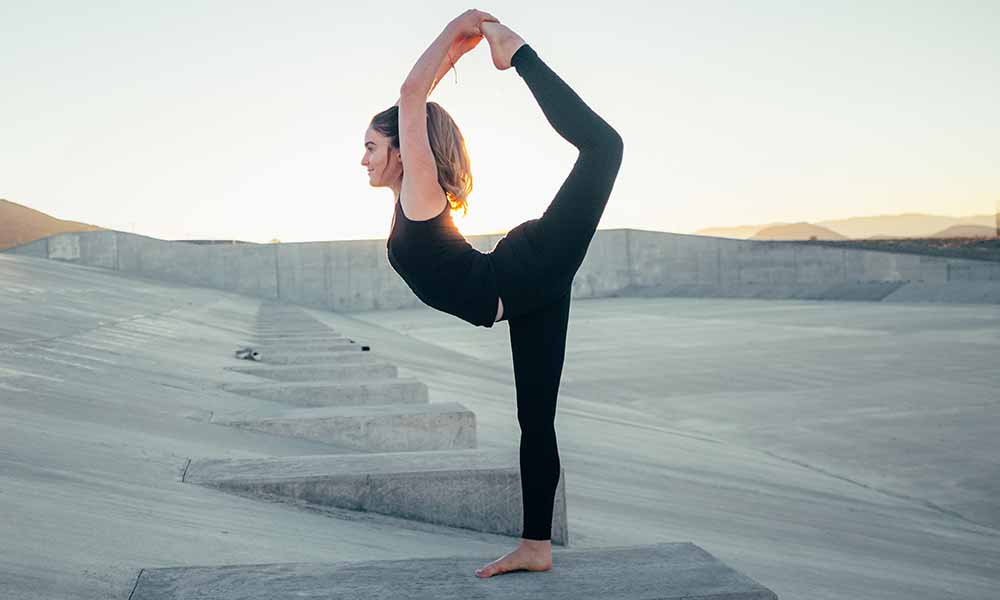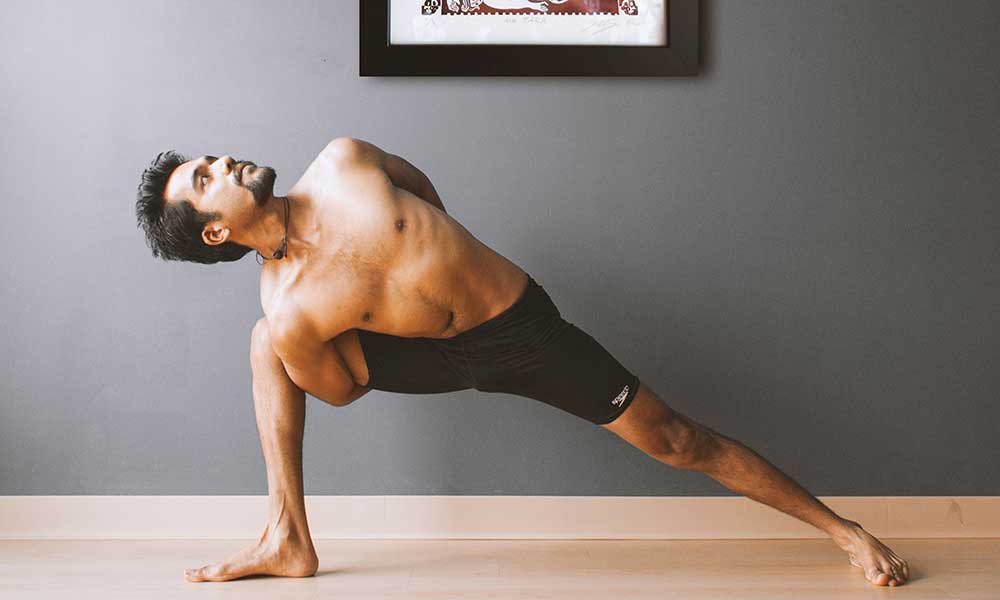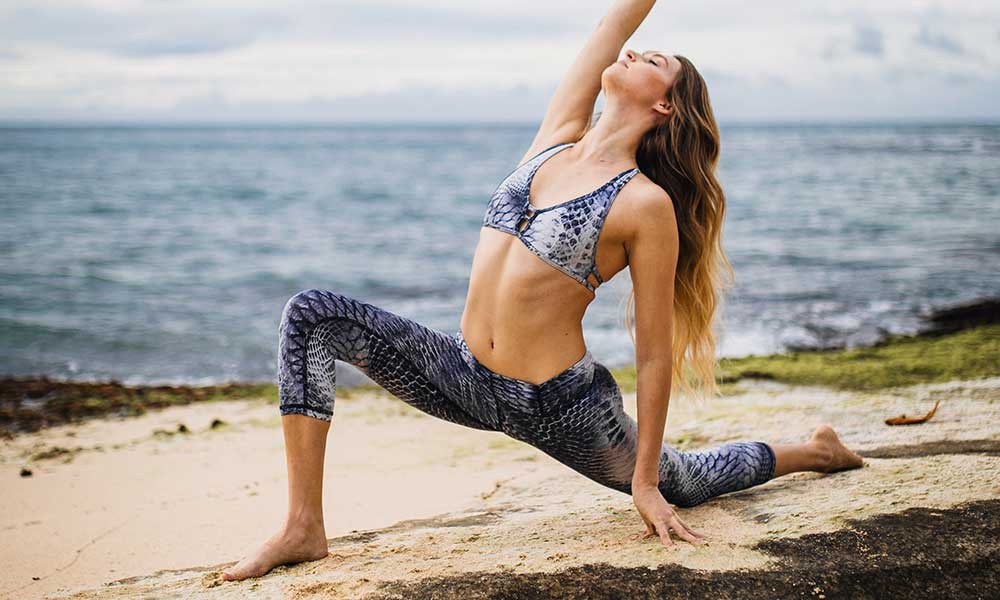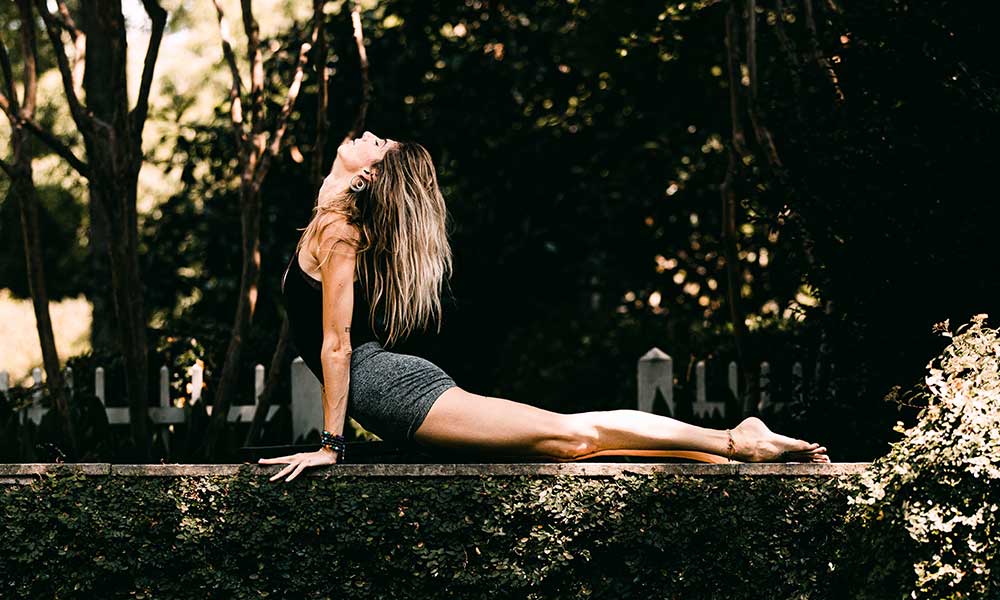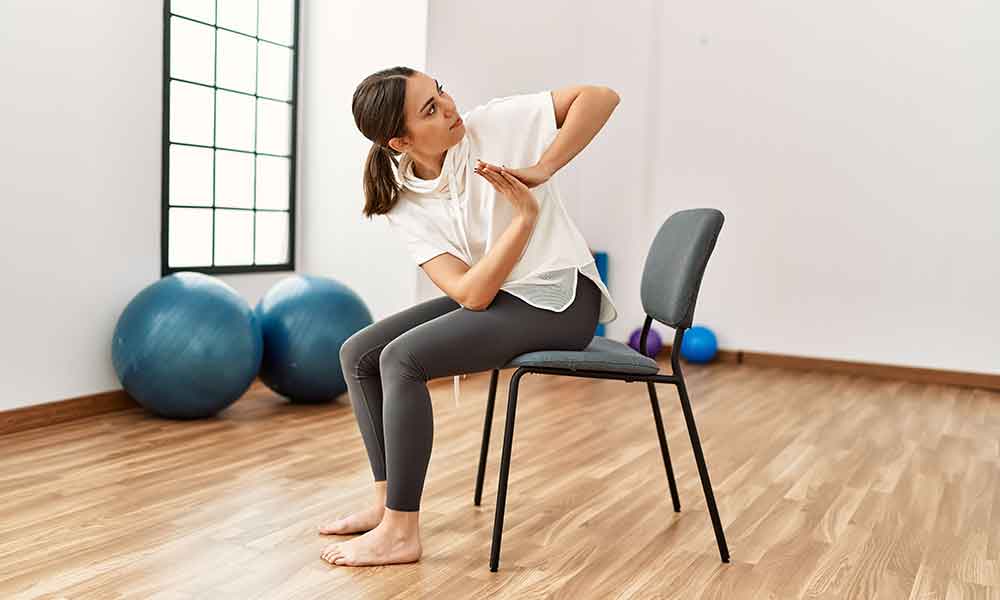While yoga is a widely popular exercise around the world, there seems to be this common misbelief that yoga is only effective for relaxation and increased flexibility. This isn’t entirely false—yoga is really good for stretching and winding down. But can practicing yoga also help us to build muscle?
The answer is yes. Aside from having a wide range of mental benefits, certain yoga poses can be just as effective as lifting weights at building muscle. This is because most yoga poses are done by having to hold up or balance on your own body weight.
Keep reading to learn more about what it takes to build muscle strength using nothing more than your body weight and a yoga mat.
What is strength training?
Strength training is a form of exercise that is done to increase muscle strength.
There are various types of strength training exercises that can be done with weights, resistance bands, or machines. However, it is possible to see muscle growth with just plain ol’ gravity and your own body’s weight.
This is because many yoga poses are isometric exercises, meaning that you are holding a muscle contraction in a still position for a period of time without changing the length of the muscle. And you know that shaky feeling you get when you feel like you can’t hold yourself up in plank pose for even just another second? That’s called metabolic stress.
How does yoga build muscle?
If you’re on this page, you might be surprised to discover that strength training can be done through yoga poses. The truth is, yoga can be an effective addition to your weight-training routine as long as you are incorporating these principles into your routine:
- Progressive Overload: The gradual increase of weight, frequency, or number of repetitions in your strength training routine to continue to put stress on the musculoskeletal and nervous system.
- Mechanical Tension: The stress that is created when the muscles are exposed to carrying a heavy load during an exercise that puts the muscle through a full range of motion.
- Mechanical Damage: The essential process of micro tears occurring in the muscle tissue so that they rebuild and come back stronger.
To summarize, as long as your muscles are undergoing enough stress, you can effectively build muscle through yoga.
Is yoga enough to build strength?
Yoga poses are effective for strength building, but if you are trying to see a significant growth in whole-body strength in a short amount of time, this might be difficult to do with just yoga.
If your goal is to build muscle throughout your entire body, you might want to consider incorporating other types of strength training into your routine.
Many fitness professionals recommend adding resistance tools, such as weights or bands, as well as the incorporation of other types of movement like bodyweight-focused poses or yoga-inspired high intensity interval training (HIIT) drills.
The Best Types of Yoga for Building Strength
There are many reasons to embark on a yoga journey, but if building physical strength is your main goal, there are certain types of yoga classes that are better suited for this than others.
When selecting a yoga class for muscle building, keep in mind that harder is not always better. Some beginner-level yoga classes with simple postures might put more stress on your muscles that a more advanced class that requires you to flow through poses at a quicker rate.
So, if increasing muscular strength is your number one goal, here is a list of some of the best classes you can take for yoga strength training.
Ashtanga Yoga
Of all the many forms that yoga comes to us in, Ashtanga is widely known to be one of the most athletic. Invented in India in 1948, Ashtanga yoga is a class that requires fitness, flexibility and focus. Some say that Ashtanga yoga is the original power yoga, a broad term for several different types of energetic, vinyasa-style yoga.
In Ashtanga, you practice exactly the same poses, or asanas, in the same order for the same breath count, every single time that you practice. The primary series in its entirety is around 90 minutes long.
The combination of intense movement and focus is vigorous to learn and practice, even for those who are quite fit and already practice yoga regularly. However, the sweaty and challenging poses done in Ashtanga yoga are great for building muscle and increasing muscle endurance. This style of yoga is particularly handy at building upper body strength.
If you are looking for a yoga practice that doubles as a full body workout, Ashtanga yoga is a good choice for you.
Vinyasa Yoga
Vinyasa is a very popular style of yoga in the United States. It is a type of yoga that is characterized by tying poses together so that you move through one after another, seamlessly, moving with the breath.
In Vinyasa yoga, you will find a wide variety of asanas, or yoga postures, and no two sequences are ever exactly alike. Vinyasa yoga aims to help you achieve a fully balanced body as it is a practice that is variable by nature. While Ashtanga is typically known to be more challenging, the fresh sequences practiced in Vinyasa help to add variety and prevent repetitive motion injuries that could occur from practicing the exact same thing every day.
By incorporating this style of yoga into your practice, you will get to awaken different muscle groups each time you practice. To get the most muscular effort out of your yoga class, try to find a yoga teacher who has you hold certain poses as much as you are flowing through poses.
For example, boat pose and bridge pose are two body weight exercises that are commonly done in Vinyasa classes. Holding boat pose for at least 30 seconds will improve your core strength while bridge pose will help to strengthen the glutes and back muscles.
Iyengar Yoga
A descendant of Hatha yoga, Iyengar yoga is a type of yoga that places a strong emphasis on the technical alignment of the poses, keeping the mind focused inwards. The focus on alignment in Iyengar is so that the student executes the intended yoga pose, while also respecting the body’s boundaries and not pushing it too far.
This style of yoga is very spiritual and prioritizes maintaining balance in the body, mind and breath. In Iyengar yoga, poses are held for longer periods of time as opposed to other forms of yoga like Vinyasa. The goal is to achieve stability in the posture to safely intensify the depth of the posture.
Since alignment is so important in Iyengar, it is common to see props being used during the practice. If at any time you feel weak or not flexible enough to do a certain pose, you can grab a yoga block, a chair, a belt, or even a blanket. If you’re not sure how to use it for support, your specially-trained yoga teacher will be happy to show you.
Due to the very physical nature of Iyengar classes, the practice is suitable for building strength, increasing muscle mass, and improving overall muscle tone. You might also notice an increase in energy, focus, and concentration after partaking in a class.
If you’re searching for a class style that will help you tone muscles and gain mental clarity, Iyengar might just be the perfect class for you.
Yoga with weights or Power Yoga
If you’re going to yoga regularly and still haven’t met all of your muscle mass goals, consider branching off from the traditional styles of yoga and try out a hybrid class.
Today, it’s very easy to find yoga classes that use free weights as props in yoga studios or even on Youtube! Names for the classes can vary, but depending on your yoga instructor, you might be asked to lift weights during a power yoga class.
For example, the teacher might have you in star pose doing squats while holding dumbbells in each hand—a move that is sure to increase muscle tone in your legs.
The best yoga poses for building strength
Just like not all styles of yoga will help your muscles grow, the same holds true for yoga poses. Sure, plank pose will fire up your stomach muscles, but savasana? Probably not. If you’re wondering what yoga poses to look out for, here’s a list of poses that will help you build strong muscles.
Utkatasana (Fierce or Chair Pose)
If you’ve ever had to do wall sits at the gym, then you know how much it burns to stay upright with your knees bent. To do chair pose:
- Stand up straight, bend your knees and allow your body to bend slightly forward for balance, keeping your arms overhead.
- Try to put your weight on your heels.
- Keep your arms strong.
- Hold this position for at least 8 rounds of breath.
This pose is great for strengthening the arms and the legs.
Virabhadrasana III (Warrior III Pose)
Warrior III is an excellent pose for building strength and practicing your balance. Here’s how to do it:
- Start in a standing position, fold forward and place your hands on the mat directly below your shoulders. You may need to use a block if you cannot reach the floor.
- Moving slowly, extend your left leg back behind you until it is in a straight line with your hips.
- Bring your hands off the floor carefully and either rest them on your hips or extend them out in front of you so that your body makes a “T” shape.
- Try to hold this pose for at least 8 rounds of breath.
- Return your hands back down to the floor and then repeat on the other side with the opposite leg.
This pose strengthens the glutes and the hamstrings of the leg that is extended.
Navasana (Boat Pose)
If you don’t enjoy doing crunches, boat pose is an effective way to strengthen your abdominal muscles. For boat pose:
- Sit up on your yoga mat with your knees bent and your feet grounded on the floor.
- Extend your arms in front of you at shoulder height.
- Lean back so that your weight is positioned right in the center of your sit bones.
- Gently float your feet off the ground, keeping your knees bent and staying long in the spine. If it is comfortable, feel free to play with straightening out your legs all the way.
- Try to hold this pose for at least five rounds of breath.
This pose will help you to build strength in the hip flexors and abdominals.
Phalakasana (Plank Pose)
This popular exercise pose is known for building strength in the abdominals, upper body and arms. Here is how to do a plank pose:
- Begin in a tabletop position, which means that you are on your hands and knees. Then step your feet back so that you are in a pushup position.
- Lift yourself up from the belly and keep your tailbone in line with your heels.
- Keep your arms strong and firm. If you begin to struggle, you may bring your knees down, but keep in mind you won’t be activating your muscles as much.
- Try to stay in this pose for at least 10 breaths before lowering back down to the ground.
Salabhasana (Locust Pose)
If you’re looking for a pose that activates muscles all over the body, locust pose might be your new best friend. To get into locust pose:
- Lie down on your stomach.
- Separate your feet and legs so that they are hip-width apart.
- Keep your arms by your sides.
- On an inhale, lift your entire body off the floor at once.
- Try to stay lifted for at least five rounds of breaths before lowering back down to the ground.
Locust pose strengthens your hamstrings, glutes, back extensors, upper back, and arms.
Setu Bandha Sarvangasana (Bridge Pose)
This pose is excellent for those who are looking to give themselves a firm behind. To get into this pose:
- Lie on your back with your arms by your sides, palms facing down.
- Bend your knees and keep your ankles positioned just below your knees, with the soles of your feet pressed against the floor.
- Press firmly into the ground on your feet to lift up your hips.
- Press the palms of your hands into the mat or roll your shoulders back and clasp your hands together underneath it for a nice stretch in the shoulders.
- Hold this pose for 8 rounds of breath before lowering back down to the ground.
How to get the most out of your yoga practice
If you want to build strength through yoga, here are some pointers to keep in mind to get the most out of your yoga practice.
- Focus on engaging your muscles: When doing yoga, it’s easy to rely on your flexibility to maintain a posture. But when your goal is to build muscle mass, this method won’t get you very far. During each movement, try to think of your muscles as the main contenders in your body. Activate them with every pose to develop strength.
- Be mindful: Don’t try to rush through the poses, especially if you are doing them incorrectly. It’s okay to take your time setting yourself up for each posture, firing them up to work in your favor.
- Add resistance tools: Adding resistance tools to your yoga workout such as resistance bands or weights can boost their strength-building efficacy. Don’t be afraid to add some dumbbells to your practice for an extra pump.
- Hold poses for longer: The longer you hold a pose, the longer your muscles have to work to hold up the weight of your body. This extra stress can strengthen your muscles and initiate muscle growth.
- Repeat poses a few times: Don’t just do a pose once. As always, don’t over-repeat and strain your body. But for the best results, mindfully repeat the poses at least one more time to really feel the burn.

